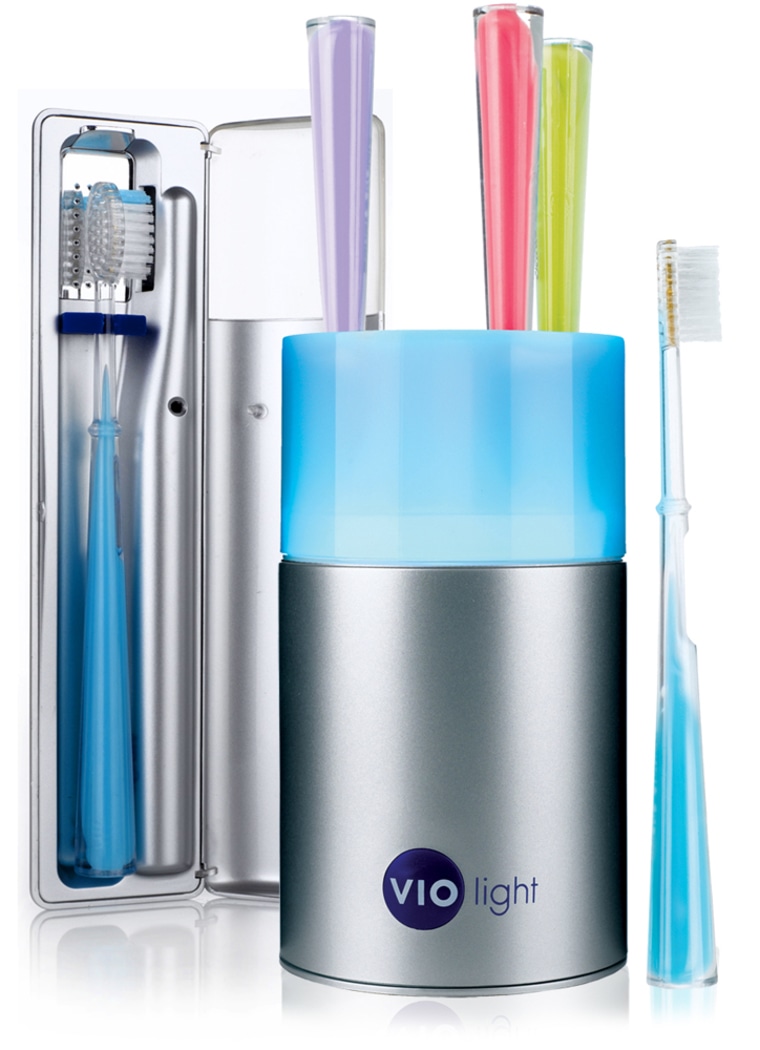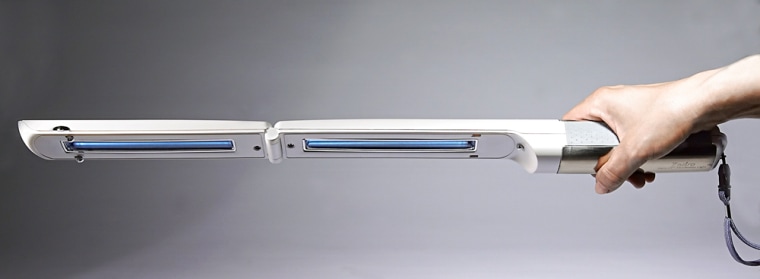When I say dirty devices, what comes to mind?
Get your mind out of the gutter. I’m talking about grime, the kind of dirt you can’t see on the surface level.
Fingerprints on white Macs (like mine) can be wiped away with bleach pads, and dirt and dust in the keyboard can be whooshed away using a can of compressed air.
But what about seemingly invisible bacteria and germs that you’d probably squirm at if you could see them on your personal technology?
Watching “Ocean’s Thirteen” or an older movie, “Safe,” could make any of us paranoid about what we can’t see — and how it really can hurt us. But it can also help make us aware that danger lurks in the most unexpected places.
Many of us already use Brita and PUR filters to clean our water, scrub with anti-bacterial soaps and liquids to disinfect our hands and employ various sprays to conk out the daily domestic pestilence. So why wouldn’t we look to technology to help us clean our gadgets?
Devices like ultraviolet scanner disinfectants, toothbrush sterilizers and sensor trash cans that minimize contact with germs are all indications of our obsession with sterile environments.
UV light at different wavelengths is the technology behind the devices that help bring a sense of cleanliness and peace of mind to worried travelers, and to those who might not clean their homes as often as they should.
To break down filth, UV light basically causes problems in organisms on a molecular level — rearranging the nasty stuff’s DNA so that it does not thrive.
But because UV light can be harmful to human skin, keep it away from you when you’re using such tools to disinfect. That’s why most of these contraptions only take 10 seconds or less to work. It’s just enough to do the damage they’re supposed to do to those malevolent microorganisms.
Jonathan Pinsky, vice-president and co-founder of VIOlight, a company that specializes in UV-based disinfecting products, said “the same technology used in water treatment, food preparation and some nail salons – very commonplace – we’ve brought into the home.”
VIOlight’s devices address the horror that may lurk in the most ordinary of things — your toothbrush.

The company’s Toothbrush Sanitizer and Storage System ($49.95) has been around since 2004. It utilizes different wavelengths of UV light to zap the bacteria that live on the bristles of the average toothbrush. In 10 minutes, they’re history. The sanitizer comes in a countertop storage container that can hold up to four toothbrushes, so it’s designed to fit in as part of a family’s routine.
The Centers for Disease Control and Prevention confirms some of our worst fears, but also reassures us that nothing too bad has come of the way we handle toothbrushes.
“The mouth is home to millions of microorganisms (germs),” the CDC says in its “Use and Handling of Toothbrushes” fact sheet.
“In removing plaque and other soft debris from the teeth, toothbrushes become contaminated with bacteria, blood, saliva, oral debris, and toothpaste. Because of this contamination, a common recommendation is to rinse one’s toothbrush thoroughly with tap water following brushing. Limited research has suggested that even after being rinsed visibly clean, toothbrushes can remain contaminated with potentially pathogenic organisms. In response to this, various means of cleaning, disinfecting or sterilizing toothbrushes between uses have been developed. To date, however, no published research data documents that brushing with a contaminated toothbrush has led to recontamination of a user’s mouth, oral infections, or other adverse health effects.”
VIOlight also has a travel-size toothbrush sanitizer ($29.95) so travelers can have peace of mind. It only need 7 minutes to work and runs on AA batteries.
“Everyone’s getting more aware of their overall health, especially their oral health,” Pinsky said. “You don’t have to be a germaphobe. Why wouldn’t you use it? It’s one extra measure of protection.”
VIOlight also has a “dental spa” ($59.95) that includes a bonus cleaning gizmo: sonic waves. The container helps take care of dentures and night guards, mouthpieces that would normally soak in water or in regular cleaning solutions. The sonic waves help discharge food particles from the devices, and then the UV does its thing.
Another company, Zadro, uses Nano UV technology and applies it to wands that you use to sweep over keyboards, remote controls, couches, computer mice, toys — anywhere you’re not comfortable having sprays treat. Prices range from $80 to $160.
As if the thought of the microscopic cooties wasn’t enough, company founder Zlatko Zadro hammers the point home.
“A street sign is cleaner than your average kitchen sink,” he said.
Not to mention, he adds, venues like airplanes — perfect environments for spreading germs (packed like sardines the way we are nowadays) — and hotels, where we don’t know if items such as TV remotes have been cleaned, much less the sheets. Even if the sheets have been washed, Zadro said, there’s still bacteria that could live on underneath the mattress and pillows.
He’s made me paranoid, but he said devices like his should put my mind at ease by giving me tools to deal with it.
UV Nano light, he said, uses the broad spectrum of UV light — UVA (long-wave band), UVB (medium wave) and UVC (short wave) — to change the DNA of bacteria so it can’t reproduce.
Huh. I only know about the device because any search of it brings up the truths I’ve been blissfully ignorant about. And now that I know about it, I am compelled to do a UV “sweep” of my entire house.
Had I not been curious, I’d be perfectly fine without these tools. Now, I’ll never be able to travel without some of them.
